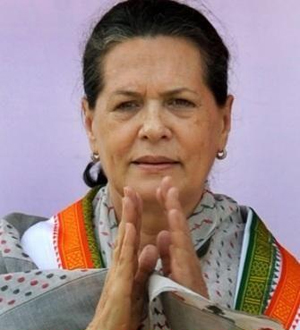 New Delhi, Mar 15: Sonia Gandhi completed 15 years as Congress president on Thursday and thanked partymen for helping her accomplish the tough responsibly.
New Delhi, Mar 15: Sonia Gandhi completed 15 years as Congress president on Thursday and thanked partymen for helping her accomplish the tough responsibly.
As leaders lined up to felicitate her at 10, Janpath, she told them, "The real credit belongs to millions of Congress workers whose toil ensured that the faith of the poor and the vulnerable in Congress did not sap even when we were not in office. I congratulate the legions who are the most extraordinary cadre any party can hope for, and who have been our priceless asset."
The comment was seen to underplay her own achievement, with Sonia widely credited with reviving the party's fortunes in the last 15 years after it had touched a low, the worst being the nine years out of power after the Narasimha Rao government.
Already the longest serving Congress chief, Sonia's 16th year coincides with the decisive step towards another transition in party leadership. Watching son Rahul ease into the job of No.2, meeting MPs and senior office-bearers daily, seems to be comforting Sonia who is known to have been all nerves when he was reluctant to move to the leadership position.
The uncertainty has been rankling Congressmen as much in the wake of Sonia's health problems. Rahul was elevated as vice-president at the Jaipur 'chintan shivir' in January.
The settling of the succession conundrum has assured Congressmen who thanked Sonia for resurrecting the party after the barren years post-1995 when the party faced divisions and watched the ascendancy of rival BJP helplessly.
Partymen underlined that Sonia's toughest challenge since 2004 would be the coming Lok Sabha polls, with a sense of drift in UPA and charges of corruption and malgovernance dogging the government. That it would also be a comment on Rahul's leadership adds to the challenge.
The political wheel seems to be coming a full circle with Sonia having taken the plunge in 1998 to extricate the party from virtual oblivion.
Congress then faced divisions and cut a sorry picture of rudderlessness under Sitaram Kesri.
In 1998, faced with persistent requests from partymen, Sonia campaigned vigorously despite Atal Bihari Vajpayee's soaring popularity that propelled the saffron alliance to power for the first time. The bad year saw Congress even lose the Gandhi stronghold of Amethi and Kesri paved way for Sonia to take charge officially as AICC president in March 1998.
Despite a withering attack on her "foreign origin", Sonia stayed the course, even contesting elections from Amethi and taking up the role of leader of opposition to pull Congressmen together.
The 2004 elections turned the tide as a confident BJP was humbled by Sonia's stewardship, an achievement that remains undefeated with the repeat victory in 2009.
Her decision to decline the prime ministership in 2004 and instead put Manmohan Singh in the chair won her rare plaudits and helped defang the BJP attack about her 'foreign origin".
While Congress has floundered recently, tripping on old weaknesses of corruption and infighting, AICC managers say Sonia is focused on reviving the party fortunes.






Comments
Add new comment